Are you wondering whether you can tag with your dog when hiking in winter? Yes, you can by following this tutorial on how to winterize your hiking dog.
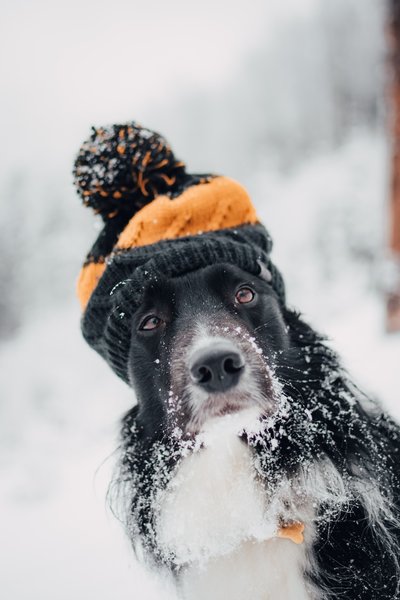
You are an all-year-round hiker, and tagging your fur friend along gives you extra pleasure. You do not need to leave them behind because of winter, as you can enjoy the snowy walk together.
The extra furry dog breeds such as the German shepherd, malamutes, Alaskan, and Akitas are naturally adapted for the cold weather. Others, such as Labradors, Bull Terrier, and Border Collies, can also come along on the winter hike if you take some simple precautions.
Before you decide to take your best friend with you, there are some factors that you must put into consideration, as follows:
Factors to Consider before bringing your dog to a winter hike
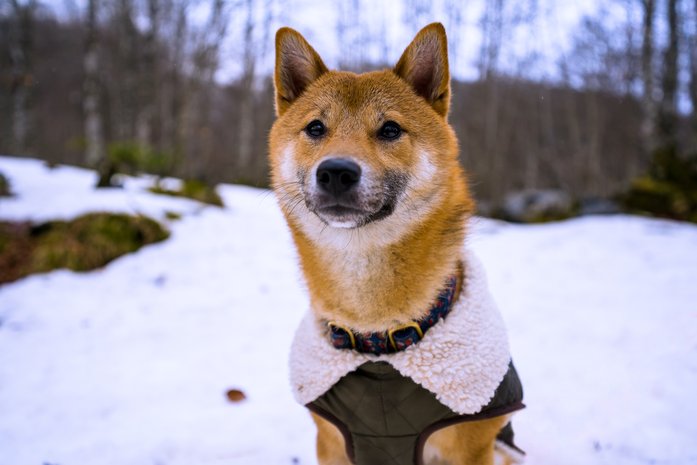
- What is the nature of the terrain that you intend to hike? Too rocky landscapes can be too rugged for furry friends. Remember, the dog will only move as far as they can, and navigating a rocky and uneven terrain in addition to the snow will drain them faster.
- Are wild animals in the vicinity, especially bears and venomous snakes? Remember, you might be unable to protect yourself and your dog if the attack is abrupt. Dogs will also act out of character and may attract the attention of wild animals towards you.
- Do you have basic dog first-aid skills? Should the dog get into an accident, will you be able to respond effectively? Alternatively, you can have the vet’s contact on speed dial, but what if they are out of reach when you need them to help in an emergency?
- Is the dog adapted to the cold weather? Has it ever been outdoors for extended periods during winter?
- How old is the dog? Younger dogs, like human babies, are more vulnerable and might not have the strength to bear the challenge of walking in the snow. Old ones, too, might be too frail for the adventure.
- Remember you will need to pack separate supplies for both of you. As you shop for the hike, you will have to buy dog food and your food. Get enough supplies to avoid being stranded in the middle of nowhere with a hungry and energy-drained dog.
A comprehensive guide on how to winterize your hiking dog:
Steps on How to Winterize your Hiking Dog
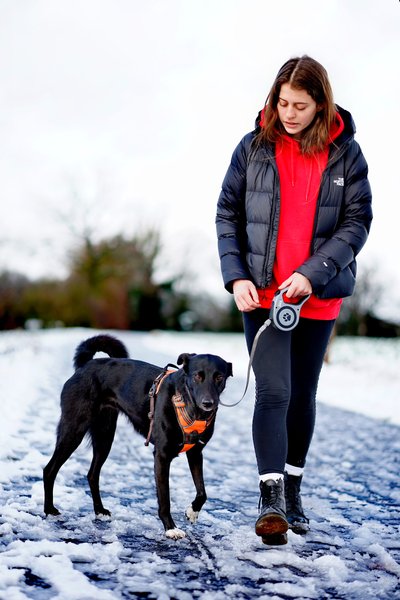
Hiking with a dog in winter is possible with just a few precautions and preparations. A hiking dog will have fewer challenges in winter than a dog that has never hiked before. Therefore, we recommend that you hike with your dog before thinking about hiking with it in winter.
Here are some basic guidelines to help you enjoy the winter hiking adventure with your furry best friend.
Winter dog gear that you should consider having to winterize your hiking dog:
Dress the dog up appropriately
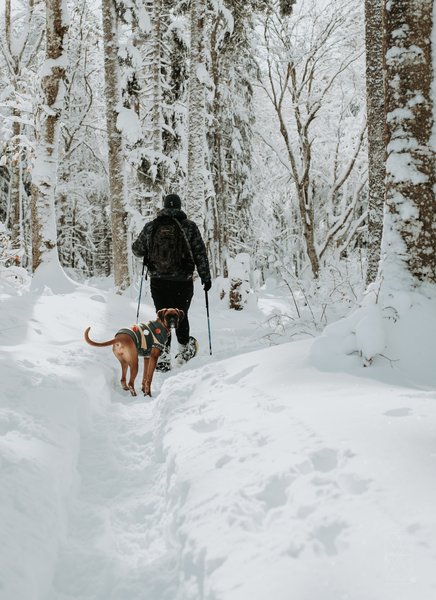
Pet supplies stockists have become more innovative and are now stocking winter clothes for pets. In the past, pet owners have been wary of being outdoors with their not-so-furry dogs that cannot withstand low temperatures.
As you layer yourself up for the winter hiking experience, you can do the same for your dog and enjoy quality time despite the cold weather.
Clothing items available for the dogs include vests, paw boots, and even insulated jackets to ensure the little friends are well protected from the cold and wet conditions in winter.
While getting the latest dog fashion clothes is exciting, consider functionality. The best coat, such as the Mihachi Turtle neck dog sweater, should cover the dog’s chest.
Consider getting polyester long neck gaiters to protect the dog’s ears and neck from snow build-up.
Ensure the clothes are not too heavy because the extra weight will tire the dog after covering a short distance, slowing down your journey.
Groom the paws
Guide on how to care for the paws when hiking in winter:
While you can get paw boots (Check here), it would also help if you groom the dog’s paws. The furs build-up between the toes pads can accumulate snow, making it difficult for the little one to walk. If you have never done this before, engage a vet since they have specialized paw trimmers that will not cause any injury.
After trimming, you will need to apply lube on the paws to protect the skin from the cold, dry air that may cause them to crack. Wax-based paw protectors, such as Burt’s Bees for Dogs Care Plus, are the most effective, though you can still apply petroleum jelly.
If you decide to use petroleum jelly, remember to reapply after every three to four hours for it to be effective. The wax-based paw protectant lasts up to several days, meaning you need one application every time you are headed out.
Keep the dog well-fed.
This is an essential step in winterizing your hiking dog since hiking in winter demands more energy from the body. You may need to add two tablespoons of vegetable oil to the dog’s dry food. The alternative is getting a high-fat content formula such as the Victor Super Premium Dog Food for high-energy and active dogs.
Your little friend will also need more water than usual. Ensure you have enough since they can get thirsty, and try to lick water from the snow.
Research on Dog-friendly terrains
If you are planning to bring your dog along in your next winter hiking adventure, you need to do some research since there are places where you will not be allowed in with a pet. You need to check out the regulations of each area you intend to visit, including the national parks and trails.
You also need to check whether you will need to cross a snowfield or a rocky terrain since these will present an additional challenge for the dog. Remember, the dog’s legs are short and easily sink in the snow, making it harder for them to move.
Get a flashy collar
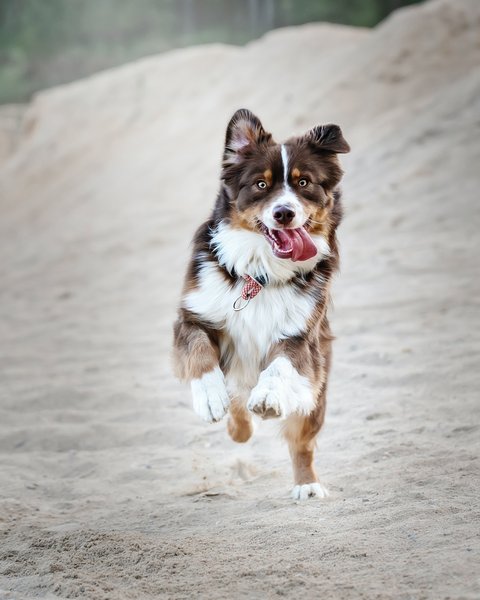
Getting a flashy collar (Check here) is an essential step on how to winterize your Hiking Dog. You cannot afford to skip this, as you may not have the dog on a leash the whole time. You will both need a break.
Now imagine your faithful companion deciding to chase down some squirrels in the forest. Of course, it may not be in a position to figure its way back to you, and you will have to go searching.
The flashy collar will make it easy to spot the dog in the extensive winter landscape and the woods. Get luminous colors such as green, orange, and pink.
Have a Doggy First Aid Kit
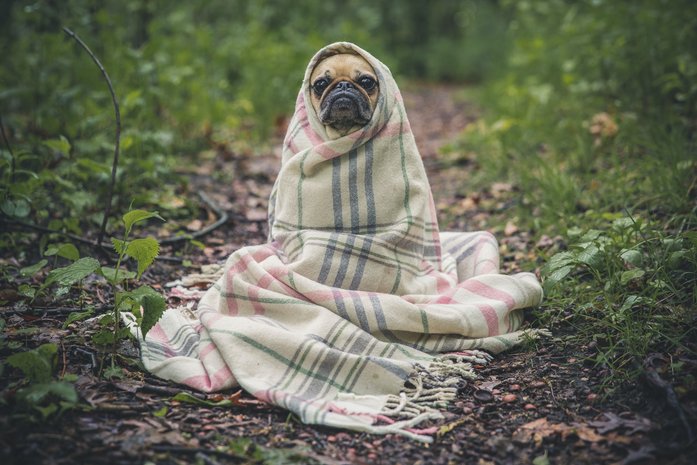
While building your survival kit, remember the doggy kit. Dogs do fall sick and get into accidents. While you can use most of the items in your first aid on the dog, some dog-specific medications can be more effective.
The doggy kit must include the following:
- A pet first aid instruction
- Vet emergency contacts
- Self-cling bandages
- Blanket
- Tape
- Gauze pads
- Hydrogen peroxide
- Tweezers
- Antibiotic ointment
- Tweezers
Get a dog-specific medical kit from here.
Have a flexible schedule.
While you need to stick to your hiking schedule, a little flexibility helps when you are in the company of Paw Paw. While you can focus on the journey and walk straight on, the doggy will keep getting distracted by bugs, movements in the bushes, and even other dogs in the company of fellow hikers.
Your pace will be slower than when you hike alone. Also, remember the dog sinks into the snow up to the neck level; hence the speed will be slowed.
Take frequent breaks to check for any injuries and recharge. Inspect your dog’s gear to be sure they are not wet, and remove any accumulated snow on the paws. If they had boots, remove them and check for any injuries on the feet.
Treat any injuries and change clothes if needed before returning to the trail.
Conclusion
These practical steps on how to winterize your hiking dog will simplify your work and allow you to have fun in the wild with your furry baby. At the journey’s end, remember to clean the dog thoroughly to eliminate any snow build-up and treat any injuries. Both of you also need enough rest.
Share your insights in the comment section if you find this content helpful. We also appreciate you for sharing this within your social circles.
